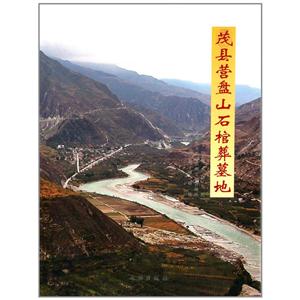-
>
清通鑒(全四冊)(精裝)
-
>
明通鑒(全三冊)(精裝)
-
>
跨太平洋的華人改良與革命 1898-1918
-
>
天有二日(簽名鈐印特裝本)
-
>
歐洲至暗時刻(1878-1923):一戰為何爆發及戰后如何重建
-
>
(精裝)奧托·馮· 俾斯麥與德意志帝國建立
-
>
華文全球史:中國文脈
茂縣營盤山石棺葬墓地 版權信息
- ISBN:9787501037476
- 條形碼:9787501037476 ; 978-7-5010-3747-6
- 裝幀:一般膠版紙
- 冊數:暫無
- 重量:暫無
- 所屬分類:
茂縣營盤山石棺葬墓地 本書特色
from 2000 to 2006, chengdu municipal institute of cultural relics and archaeology and other organizations carried out five excavations at the yingpanshan site, covering an area of nearly 2500 square meters. over 200 stone-coffin tombs and pits with artifacts were excavated. in neat rows, the stone-coffin tombs were dug in the same layer and did not overlapped or disturbed each other. according to the orientation, all the tombs can be roughly divided into two groups. the first group was mainly distributed at the first and forth location, most of which has a direction angel of over150o. the second group was chiefly found at the second and third location, most of which has a direction angle less than 150o. the structure of tombs is relatively uniform, consisting of the stone walls and cover but no bottom board. in some tombs, a stone slab was erected at the head end to form a head nest for placing funerary goods. according to the number of head nest, the tombs are divided into three types. tombs of type i have no head nest and can be classified into three classes: class a with a broad space but less in number, class b with a small space and distribution in group, and class c with relatively abundant funerary objects in separated goods pits. tombs of type ii have one head nest, rich in number but with not many funerary objects. built with processed stone slabs, tombs of typelll have double head nests, a broad tomb space and ample burial goods. the corpses of the tomb occupants were laid in three kinds of way, many of which were arranged in a supine position, with straight limbs and relatively intact skeletons. in the secondary burials, incomplete skeletons were dispersedly placed. some bodies were put face-down and others might have been dismembered before the burial. compared with other cemeteries in the upper reaches of min river, the yingpanshan cemetery owns some special burial customs, such as leaving numerous potteries at the head or foot ends of the stone coffin, or digging an artifact pit near the tomb. many small white stones or huge rocks found in the tomb chamber were deemed to be used for worship or some funerary purpose.
茂縣營盤山石棺葬墓地 內容簡介
From 2000 to 2006, Chengdu Municipal Institute of Cultural Relics and Archaeology and other organizations carried out five excavations at the Yingpanshan Site, covering an area of nearly 2500 square meters. Over 200 stone-coffin tombs and pits with artifacts were excavated. In neat rows, the stone-coffin tombs were dug in the same layer and did not overlapped or disturbed each other. According to the orientation, all the tombs can be roughly divided into two groups. The first group was mainly distributed at the first and forth location, most of which has a direction angel of over150o. The second group was chiefly found at the second and third location, most of which has a direction angle less than 150o. The structure of tombs is relatively uniform, consisting of the stone walls and cover but no bottom board. In some tombs, a stone slab was erected at the head end to form a head nest for placing funerary goods. According to the number of head nest, the tombs are divided into three types. Tombs of Type I have no head nest and can be classified into three classes: Class A with a broad space but less in number, Class B with a small space and distribution in group, and Class C with relatively abundant funerary objects in separated goods pits. Tombs of Type II have one head nest, rich in number but with not many funerary objects. Built with processed stone slabs, Tombs of Typelll have double head nests, a broad tomb space and ample burial goods. The corpses of the tomb occupants were laid in three kinds of way, many of which were arranged in a supine position, with straight limbs and relatively intact skeletons. In the secondary burials, incomplete skeletons were dispersedly placed. Some bodies were put face-down and others might have been dismembered before the burial. Compared with other cemeteries in the upper reaches of Min River, the Yingpanshan cemetery owns some special burial customs, such as leaving numerous potteries at the head or foot ends of the stone coffin, or digging an artifact pit near the tomb. Many small white stones or huge rocks found in the tomb chamber were deemed to be used for worship or some funerary purpose.
茂縣營盤山石棺葬墓地 目錄
**節 概述
一 地理環境
二 歷史沿革
第二節 工作概況
一 岷江上游石棺葬發現與發掘歷史回顧
二 營盤山石棺葬墓地發掘經過
三 整理編寫
第二章 墓葬總述
一 地層介紹
二 墓葬概況
三 遺物概述
第三章 甲類墓
**節 甲a類墓
一 2000m5
二 2000m31
三 2000m34
四 2000m35
五 2000m44
六 2002m3
七 2002m5
八 2002m8
九 2002m11
一○ 2002m14
一一 2002m15
一二 2002m29
一三 2002m40
一四 2003ml
一五 2003m4
一六 2003m5
一七 2003m10
一八 2003m11
一九 2003ml6
二○ 2003m19
二一 2003m28
二二 2004m3
二三 2004m4
二四 2004m6
二五 2004m10
二六 2004m11
二七 2004m15
二八 2004m31
二九 2006m13
第二節 甲b類墓
一 2002m47
二 2004m12
三 2004ml7
四 2004ml8
五 2004m25
六 2004m26
七 2006m9
八 2006m10
九 2006m1l
一○ 2006m12
一一 2006m16
第三節 甲c類墓
一 2000m1
二 2000m2
三 2003m22
四 2003h28
第四章 乙類墓
一 2000m3
……
第五章 丙類墓
第六章 其他墓
第七章 地層出土器物及采集品
第八章 分期與年代
第九章 相關問題的初步認識
附表 茂縣營盤山石棺葬登記表
附錄
后記
英文提要
茂縣營盤山石棺葬墓地 作者簡介
成都文物考古研究所主要職能是承擔成都市地下文物調查、勘探、發掘、研究、保護等工作。現有職工35人,聘用人員40余人,其中具有中高級業務職稱的科研人員32人。內設考古發掘研究一部、二部、三部,金沙遺址工作站,文物保護中心,辦公室,保衛科,財務科。
- >
煙與鏡
- >
企鵝口袋書系列·偉大的思想20:論自然選擇(英漢雙語)
- >
苦雨齋序跋文-周作人自編集
- >
小考拉的故事-套裝共3冊
- >
莉莉和章魚
- >
伊索寓言-世界文學名著典藏-全譯本
- >
名家帶你讀魯迅:故事新編
- >
二體千字文
















